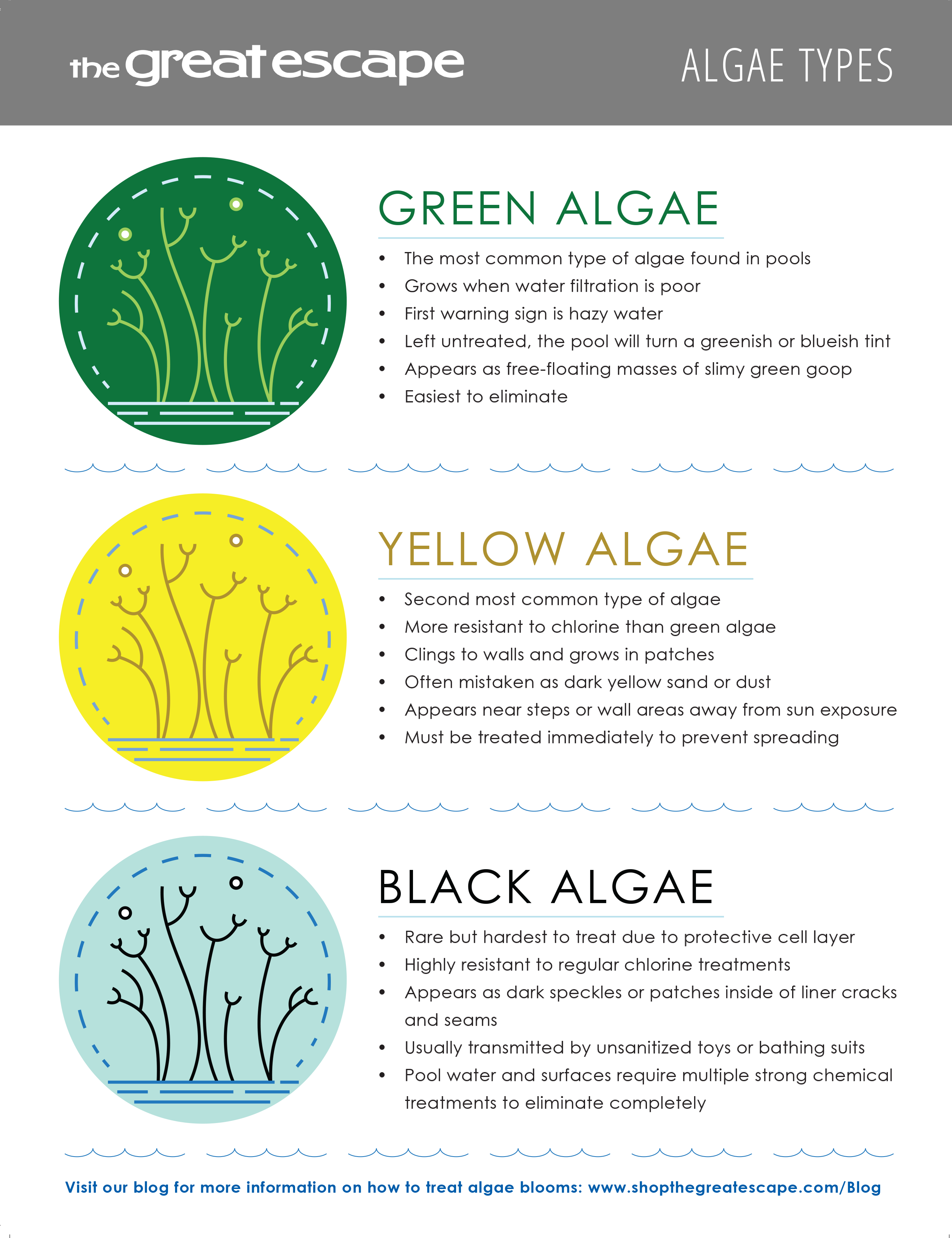
Pool Care 101: Algae Invaders
Posted by | Sep 10, 2019
Now that the weather is finally warming up and pool owners across the Midwest are drawing back their winter covers, most will see mysterious globs of green, yellow or black resting idly on the walls and floors of their pools.
The first question that might come to mind: “Is this stuff toxic?” The answer: no. The algae that grows in your pool is not so different from the sea weed you encounter at your local beach, creep factor included. Slimy, fast-growing and sometimes hard to get rid of, algae can be as frightening as your classic horror flick villain. With our cleaning tips and tools, we’ll help you be the hero of summer with a sparkling pool to prove your accomplishment.

WHERE DID IT COME FROM?
Algae grows from microscopic spores that travel into your pool via heavy winds, rain, dirt, and animals. Dirty filters and unwashed swim suits can also contribute to algae blooms.
Algae spores are always present in your pool and, without proper maintenance, can grow out of control in a matter of hours. Pool water effected by high temperatures, poor circulation, rain storms, and chemical imbalances provide ideal conditions for an algae overgrowth.
ARE THERE DIFFERENT KINDS?
There are over 20,000 forms of algae. The most common pool invaders are easily identified by the following algae colors: green, yellow, and black.
- Green algae is the most common type and grows when water filtration is poor. The first warning sign of green algae overgrowth is hazy water. When left untreated, the algae turns the pool a greenish or blueish tint and can appear as free-floating masses of slimy green goop. The good news: green algae is the easiest to eliminate.
- Yellow algae is the second most common type and is more resistant to chlorine. It clings to walls and grows in patches, often mistaken as dark yellow sand or dust near steps or wall areas that don’t receive much sun exposure. While relatively easy to brush away, the proper chemical and cleaning treatments should still be used immediately to keep the growth from spreading to all interior pool surfaces.
- Black algae is rare and yet is the hardest to treat because of its cell structure. Black algae is the only type that has a protective layer on the outside of the cell walls, making it highly resistant to regular chlorine treatments. Black algae appears as dark speckles inside of pool liner cracks and seams. It is usually transmitted by toys or bathing suits that were used in the ocean and not properly cleaned before entering the pool. To get rid of spores completely, all toys and bathing suits must be thoroughly cleaned before re-entering. Pool water and surfaces will need multiple strong chemical treatments.
WHAT CAN I DO TO PREVENT ALGAE FROM GROWING?
Preparation is key! Here are the basic steps to preventing and treating an algae bloom in your pool.
- Be sure to check and clean your pool filter regularly to keep water flowing properly.
- Brush the pool walls and floor to make sure every particle is running through your filter.
- Balance the water pH and alkalinity to improve chlorine effectiveness.
- In the evening, apply a super chlorinator to weaken any existing algae spores.
- Use a non-foaming premium algaecide to kill any remaining algae.
- Vacuum and backwash the dead algae.
Summer fun awaits at The Great Escape!

